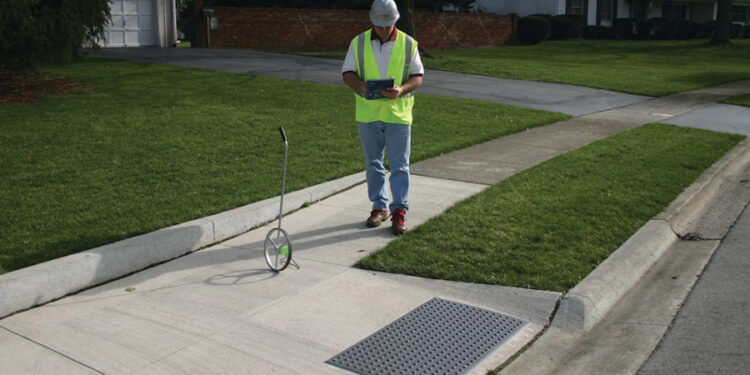The Unassuming Ascent: How ADA Curb Ramps Pave the Way for Independent Living

In the intricate tapestry of urban infrastructure, certain elements, though seemingly minor, wield a profound influence on the lives of countless individuals. Among these unsung heroes of accessibility are the unassuming curb ramps mandated by the Americans with Disabilities Act (ADA). They are fundamental cornerstones of independent living, empowering individuals with disabilities to participate more fully and equitably in their communities. Their impact reverberates through daily routines, social interactions, and the very sense of self-reliance for millions.
-
Breaking Down Barriers: Physical Access and Beyond
The most immediate and obvious impact of ADA curb ramp lies in their ability to dismantle physical barriers. For wheelchair users, individuals using mobility aids like walkers or canes, and even parents pushing strollers, a standard curb presents an insurmountable obstacle. What is a negligible step for some becomes a formidable wall, restricting movement and fostering dependence. Curb ramps transform these barriers into seamless pathways, allowing individuals to navigate sidewalks, crosswalks, and public spaces with greater ease and autonomy.
This newfound physical access extends far beyond mere convenience. It unlocks opportunities that were previously inaccessible. Individuals can travel to work, attend appointments, visit friends and family, and participate in civic life without relying on the assistance of others to overcome these basic architectural hurdles. This freedom of movement is not just about getting from point A to point B; it’s about engaging with the world on one’s own terms, a cornerstone of independent living.
-
Fostering Inclusion and Social Participation
The impact of curb ramps transcends the purely physical; it deeply influences social inclusion and participation. When the built environment presents constant obstacles, individuals with disabilities can feel marginalized and excluded. The effort and potential embarrassment of requiring assistance to navigate simple terrain can deter participation in community events, social gatherings, and even everyday errands.
Curb ramps, by normalizing access, foster a sense of belonging. They signal that public spaces are designed for everyone, regardless of their physical abilities. This subtle but powerful message encourages greater social interaction and integration. Individuals feel more confident venturing out, knowing that the basic infrastructure supports their mobility. This increased participation enriches communities as a whole, bringing diverse perspectives and experiences into the social fabric.
-
Enhancing Safety and Reducing Risk
Beyond facilitating access, curb ramps significantly enhance the safety of individuals with mobility challenges. Attempting to navigate a standard curb in a wheelchair or with a mobility aid poses a considerable risk of falls and injuries. The uneven surface and sudden drop can lead to loss of control, potentially resulting in serious harm.
Curb ramps provide a stable and gradual transition, minimizing the risk of accidents. This increased safety not only protects individuals physically but also reduces anxiety and fosters greater confidence in their ability to navigate their surroundings independently. Knowing that the environment is designed with their safety in mind empowers individuals to be more active and engaged in their communities.
-
Promoting Economic Independence
The ability to move freely and independently has significant implications for economic empowerment. Accessible infrastructure, including curb ramps, enables individuals with disabilities to access employment opportunities. Without reliable and independent transportation options, securing and maintaining a job can be incredibly challenging.
Curb ramps, as part of a larger accessible transportation network, allow individuals to travel to and from work independently. This reduces reliance on paratransit services, which can be limited and require advance booking, offering greater flexibility and control over their schedules. By facilitating access to employment, curb ramps contribute directly to economic self-sufficiency and reduce the financial burden on individuals and society.
A Testament to Inclusion and Empowerment
In conclusion, ADA curb ramps are far more than just concrete slopes; they are powerful symbols of inclusion and crucial enablers of independent living. They break down physical barriers, foster social participation, enhance safety, promote economic independence, and benefit a wide range of individuals.



